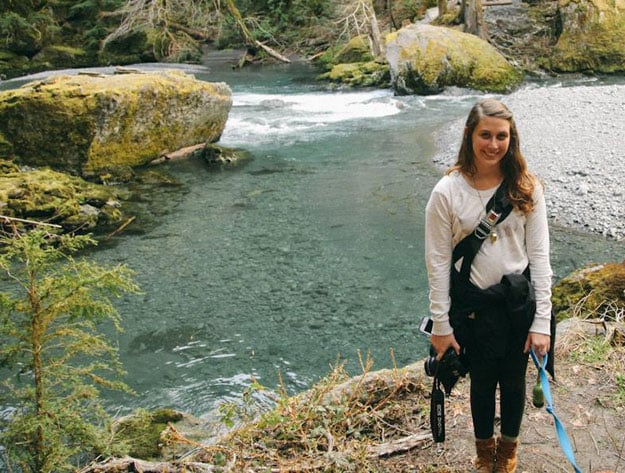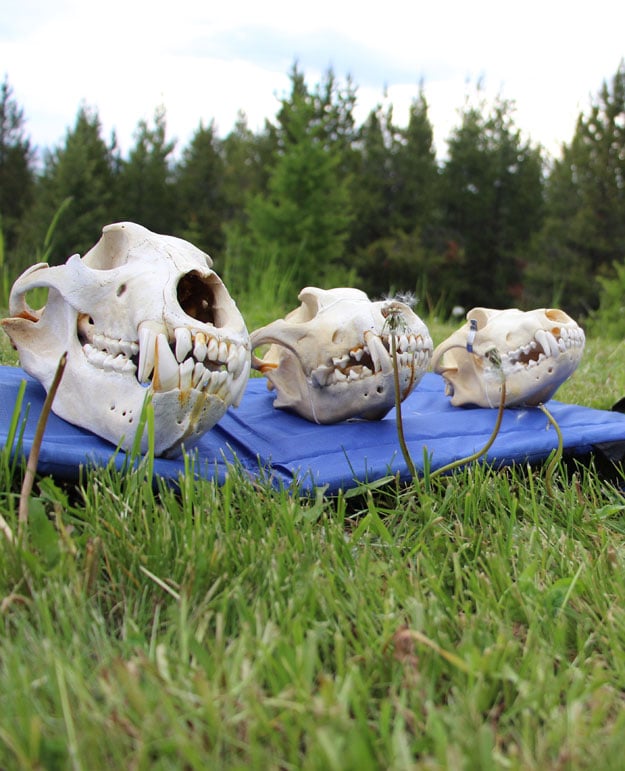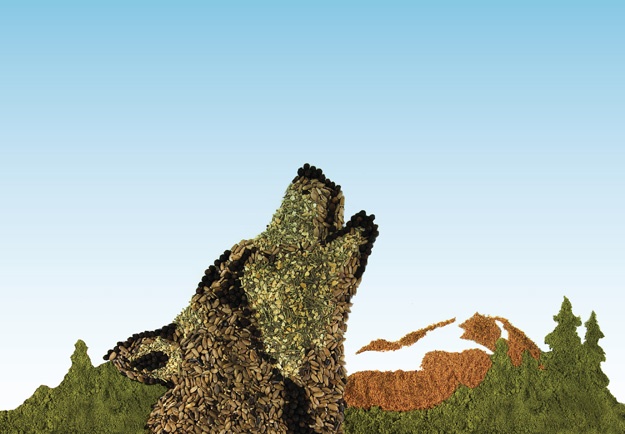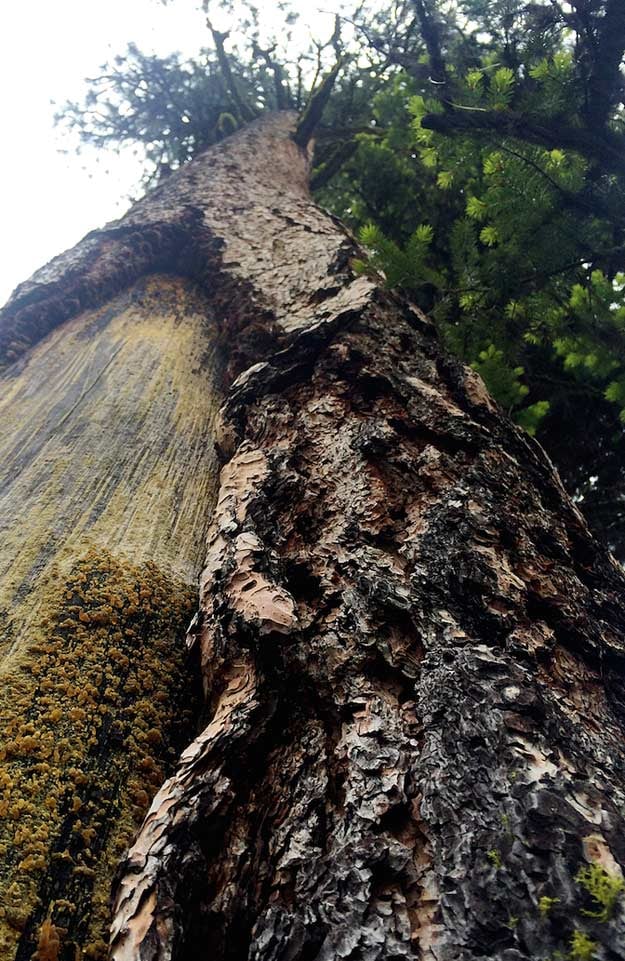Danica Swenson is Oregon Wild's summer Wildlife Intern. She's also a student at Lewis and Clark Law School, studying Animal and Environmental law. When she's not reading for school or work, she's out adventuring or volunteering at a local wildlife rehabilitation center. She was exposed to the issues surrounding endangered species at an early age from growing up in Hawaii, which has one of the highest amounts of endangered native species listed federally. She's passionate about educating others on animal and environmental issues, which is reflected in her work.
This June, Oregon Wild hosted its 5th Annual Wolf Rendezvous sponsored by Mountain Rose Herbs! As Oregon Wild's Wildlife Intern, I was lucky enough to tag along and help out. In light of recent news of OR-7 pups and a new pack on Mt. Emily, there was a lot of wolf buzz surrounding our trip. The purpose of this yearly trip is to educate the public on wolf recovery in Oregon, the positive impacts wolves can have on an ecosystem, and the big challenges wolves face in communities driven by ranching.
We started the weekend with a short hike led by Wally Sykes and a presentation by Jim Akenson, recent Executive Director of Backcountry Hunters & Anglers, about the natural history of wolves and other predators. This gave the group a solid foundation of wolf knowledge that we built on later that night around the campfire with a more in-depth discussion of wolves. The hike with Wally only hinted at the beautiful landscapes we would see in the next few days.
Jim Akenson spent many years living in remote wilderness in Idaho studying native carnivores, so he was a treasure trove of information. He also brought a box full of amazing predator skulls and bones, which we all ogled at and guessed who was who!
First stop the next day was to meet with Russ Morgan, the Wolf Program Coordinator for the Oregon Department of Fish and Wildlife. He discussed the biology surrounding wolf recovery, the complications he sees first hand in the ranching community, and put his hand in a wolf trap as a demonstration. A huge issue in wolf recovery is predation on livestock and the most fascinating piece of information I learned is how he tells the difference between an animal killed by a bear, cougar, or wolf. (That’s important for ODFW to do because ranchers are compensated for predation by wolves!) His job is most likely one of the most difficult at ODFW, balancing the need for wolf conservation and the ranching communities’ interests.
After meeting with Russ Morgan, we went on a hike near wolf territory. No wolf sightings then, but we found a couple wolf tracks and scat! I had no idea how huge wolf tracks are. I grew up with a husky/malamute mix so I thought I knew what big paw prints look like, but these are giant! With Wally leading the way, we were careful to steer clear of where the wolves have denned in recent years. We were dismayed to see a large herd of cattle roaming through these public lands, not far from where wolves have been documented. It seemed odd to me that a rancher (who most likely had knowledge of the wolves’ prior habitat area) would place his free range herd so close to where wolves with potential pups could be living.
On Saturday, we had more to think about in the form of two different perspectives on the landscapes there. First we had an excursion into the Zumwalt prairie with Ralph Anderson, who worked for the Forest Service for many years. He showed us locations that the Nez Perce, the local Native American tribe, used to use for food scavenging. They would tap Ponderosa Pines for its pitch, which was used for medicinal purposes. We even tasted some of the wild onion and edible flowers that grow there!
Perhaps one of the highlights of the trip was the sighting of a potential wolf!! We were driving through the Zumwalt praire when we saw a herd of elk coming over a hill, running at full speed. We stopped the van and watched them jump over fences, cross the road, and head up the opposite hills. We weren’t sure what was chasing it until one of the attendees spotted some kind of canid. This big dog was just tracking the herd, not actively chasing it. Right now our group is split on whether it was a wolf or coyote, with the majority going for wolf. Based on the dog’s behaviors and it’s physical appearance (rounded ears, boxy face, dark fur, etc.) I’m going with wolf. Coyotes tend to be smaller with lighter fur and long, pointy noses. What do you think??
Later that day the group met with a rancher who has personally experienced livestock losses from wolf predation. Hearing this perspective of the wolf discussion was crucial to ensuring our participants understand the entire issue. It wouldn’t be fair if we held an entire weekend dedicated to wolves without hearing anything from the other side. While many of us disagreed with the rancher on multiple points, we were all very impressed with how much this rancher cares about his cows and their livelihood. It also deepened our understanding of what these ranchers deal with when it comes to wolves returning to their native landscape. It seemed that to most of the attendees, this was one of the most important narratives that we heard. Some felt that we didn’t ask hard enough questions, but I think it’s better that we start the dialogue slow. It’s crucial to have open lines of communication between the conservation side and the ranchers’ side, so it’s best to be respectful in these beginning stages of cooperation and exchanges.
I was so impressed with the insight and thoughtfulness that our attendees brought. Everyone came from different backgrounds and levels of wolf knowledge, but we all came together and had some great, thought provoking conversations about the dilemmas surrounding wolf recovery in Oregon. Almost all of the attendees voiced some kind of concern regarding the potential de-listing of wolves from the Endangered Species Act, which is a possibility in 2015 -- a sentiment that Oregon Wild shares as well.
I would venture to say that the 2014 Wolf Rendezvous was a success. We heard voices from almost every perspective of the wolf recovery issue, saw a potential wolf, found tracks, and enjoyed the company of other wildlife advocates in one of the most beautiful spots in Oregon. I learned so much and I’m excited to share this experience with all of you through this post and my photos!
Please contact Oregon Wild if you have questions about the Rendezvous!
Check out Mountain Rose Herb's ad in support of wolves & Oregon Wild!














